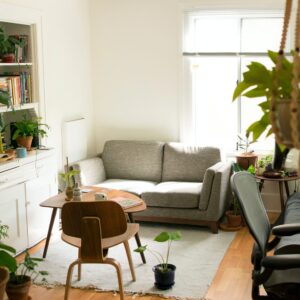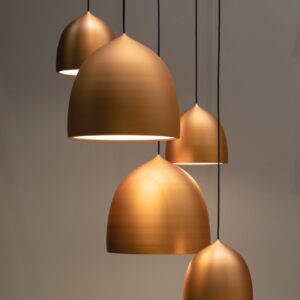Incorporating indoor plants into your home decor for better air quality
Breath of Fresh Style: Incorporating Indoor Plants for Better Air Quality in Home Decor
Introduction: As an expert interior designer, I often emphasize the transformative power of indoor plants in elevating both the aesthetics and the ambiance of a living space. Beyond their visual appeal, indoor plants play a crucial role in enhancing air quality, creating a healthier and more vibrant home environment. In this blog, I’ll guide you through the art of incorporating indoor plants into your home decor to promote better air quality and infuse your space with a breath of fresh style.
- Understanding the Benefits: Indoor plants are not just decorative elements; they are natural air purifiers. Through a process called photosynthesis, plants absorb carbon dioxide and release oxygen, improving air quality. Additionally, many plants have the ability to filter out common indoor pollutants.
- Choose Low-Maintenance Varieties: For those new to indoor gardening, start with low-maintenance plant varieties that are resilient and adaptable. Snake plants, pothos, and spider plants are excellent choices as they thrive in various conditions and require minimal care.
- Create a Green Focal Point: Make a design statement by incorporating a large, eye-catching plant as a focal point in a room. A lush fiddle leaf fig or a tall rubber plant can add a touch of drama and sophistication while contributing to improved air quality.
- Grouping Plants for Impact: Create a visually dynamic display by grouping different plants together. Mix and match plant sizes, shapes, and textures to add depth and interest to your home decor. Consider placing them on shelves, plant stands, or in decorative baskets.
- Hanging Gardens for Vertical Appeal: Embrace vertical space by incorporating hanging planters. Suspended plants like ferns, hoyas, or trailing succulents not only save floor space but also add an element of greenery at eye level, creating a captivating visual impact.
- Incorporate Plants into Functional Spaces: Integrate plants into functional spaces such as kitchens and bathrooms. Herbs like basil, mint, or rosemary thrive in kitchen environments, providing fresh herbs for cooking while contributing to improved air quality. Bathroom-friendly plants like peace lilies thrive in humid conditions.
- Consider Air-Purifying Plants: Choose plants known for their air-purifying qualities. Spider plants, peace lilies, snake plants, and pothos are among the varieties renowned for filtering out common indoor pollutants like benzene, formaldehyde, and trichloroethylene.
- Play with Planters and Pots: Elevate the visual appeal of your indoor plants by selecting stylish planters and pots. Choose containers that complement your decor style—whether it’s ceramic, metallic, woven, or minimalist. The right planter can enhance the overall aesthetic of your space.
- Balance with Size and Scale: Achieve harmony by considering the size and scale of your indoor plants in relation to the room. Larger plants can anchor a space and make a bold statement, while smaller plants can add a delicate touch to shelves or tabletops.
- Create Plant Zones: Designate specific areas in your home as “plant zones” to concentrate greenery and create a cohesive look. Whether it’s a corner filled with a variety of plants or a designated shelf for a plant collection, this approach adds a curated and intentional touch to your home decor.
Conclusion: Incorporating indoor plants into your home decor is a design choice that goes beyond aesthetics—it’s an investment in your well-being. By strategically placing plants throughout your home, you not only enhance the visual appeal but also contribute to better air quality. Embrace the beauty of greenery, and let your home breathe with vitality and style. It’s time to turn your living spaces into a lush sanctuary where design and well-being converge seamlessly.
Frequently Asked Questions (FAQs) – Incorporating Indoor Plants into Your Home Decor for Better Air Quality
Q1: How do indoor plants contribute to better air quality in a home? A1: Indoor plants play a vital role in improving air quality by absorbing carbon dioxide and releasing oxygen during photosynthesis. They also act as natural air purifiers, removing toxins like benzene and formaldehyde from the air.
Q2: What types of indoor plants are best for improving air quality? A2: Plants such as Snake Plant, Spider Plant, Peace Lily, and Boston Fern are known for their air-purifying qualities. Each plant has unique attributes that help filter and cleanse the air in different ways.
Q3: How many plants do I need to notice a difference in air quality in my home? A3: The number of plants needed depends on factors like the size of your home and the type of plants you choose. As a general guideline, aim for at least one medium-sized plant per 100 square feet of living space for noticeable air quality benefits.
Q4: Can indoor plants thrive in every room of the house, or are there specific considerations for different areas? A4: Most indoor plants can adapt to different rooms, but it’s essential to consider their specific light and humidity requirements. Some plants thrive in bright, indirect light, while others are well-suited for lower-light areas. Match plants to the conditions in each room.
Q5: How can I incorporate indoor plants into my home decor without overwhelming the space? A5: Choose a variety of plant sizes and types to create visual interest. Place smaller plants on shelves, countertops, or tables, and use larger floor plants as statement pieces. Consider hanging plants or using wall-mounted planters to save floor space.
Q6: Are there specific plants that are easy to care for and suitable for beginners? A6: Yes, beginner-friendly plants include Snake Plant, Pothos, Spider Plant, and ZZ Plant. These plants are resilient, require minimal maintenance, and can thrive in a variety of light conditions.
Q7: Can indoor plants thrive in low-light conditions, and what are some suitable options for such environments? A7: Yes, several plants thrive in low-light conditions. Examples include Snake Plant, ZZ Plant, Peace Lily, and Pothos. These plants can tolerate lower light levels and still contribute to better air quality.
Q8: How can I prevent overwatering or underwatering my indoor plants? A8: Get to know the water requirements of each plant and create a watering schedule. Use well-draining pots to prevent waterlogging. Monitor the moisture level of the soil and adjust your watering frequency based on the specific needs of each plant.
Q9: Are there indoor plants that are safe for homes with pets? A9: Yes, many indoor plants are safe for homes with pets. However, some plants can be toxic to animals. Safe options include Spider Plant, Boston Fern, and Areca Palm. Always research a plant’s toxicity before introducing it into a pet-friendly home.
Q10: Where can I find inspiration for incorporating indoor plants into my home decor? A10: Explore home decor magazines, interior design blogs, and social media platforms for inspiration. Visit local plant nurseries for guidance on suitable plants for your specific conditions. Join online plant communities to share ideas and experiences with fellow plant enthusiasts.
In conclusion, the integration of indoor plants into home decor is a breath of fresh air, both figuratively and literally. Throughout this exploration, it becomes clear that harnessing the beauty of nature within living spaces is not only a design choice but also a strategic move for promoting better air quality and overall well-being.
As an expert interior designer, I emphasize the dual role that indoor plants play in enhancing both aesthetics and indoor air quality. The natural vibrancy and varied forms of plants contribute to the visual appeal of any space, creating a connection with the outdoors that is both calming and invigorating.
The science behind plants acting as natural air purifiers cannot be overstated. Through photosynthesis, plants absorb carbon dioxide and release oxygen, while also filtering out pollutants and toxins from the air. This not only fosters a healthier living environment but also aligns with the growing awareness of sustainable and eco-friendly design practices.
Selecting the right plants for specific spaces is crucial. Low-maintenance varieties that thrive indoors, such as snake plants, pothos, and peace lilies, not only survive in different light conditions but also effectively contribute to improved air quality. The strategic placement of these plants in various rooms creates a harmonious balance between aesthetics and functionality.
The versatility of incorporating indoor plants allows for creative and personalized design expressions. From hanging planters to stylish pots, the containers themselves become design elements that add a touch of greenery to any decor style. Vertical gardens and plant clusters serve as focal points, injecting life into the overall design scheme.
In conclusion, bringing the outdoors in through the inclusion of indoor plants is a design philosophy that transcends trends. Beyond their decorative appeal, these green companions contribute to a healthier living environment, reflecting a commitment to both style and well-being. As we continue to appreciate the synergy between design and nature, incorporating indoor plants becomes not just a choice in decor but a conscious step toward creating homes that truly nurture and rejuvenate their inhabitants.















